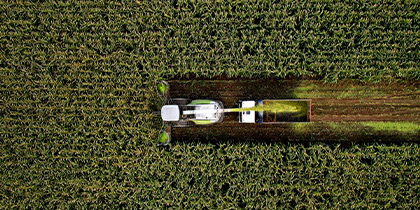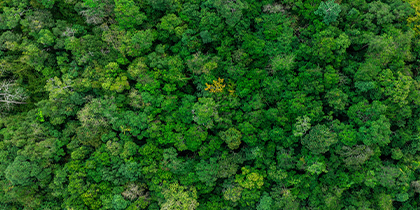The energy transition is a well-known concept around the world. The transition from fossil fuels such as coal, oil and gas to renewable energy sources such as solar, wind and hydrogen is in full swing.
In contrast, the raw material transition is lagging behind, even though it is at least as important.
In this blog you will read why the raw material transition is indispensable for the realization of a circular economy and what companies can do to contribute to realizing this.
What is the raw materials transition?
The raw materials transition is the change from linear to circular use of raw materials. Instead of using materials once and then throwing them away, the focus is on reuse, preserving value and preventing waste.
The goal? Less waste, less dependence on scarce materials and an economy where raw materials are reused rather than consumed.

Why is the resource transition important?
The pressure on raw materials is increasing worldwide. And this is becoming more and more visible. As of July 24, 2025 (Earth Overshoot Day), we are using more raw materials worldwide than the earth can replenish this year. We are living as if we have 1.7 Earths at our disposal.
The demand for resources continues to rise due to the world's growing population and economic developments. At the same time, global supply is under pressure-due in part to climate change, such as extreme droughts and floods.
This pressure also affects the competitive position of companies. Only limited amounts of raw materials are available in Europe, making us heavily dependent on imports from countries outside the EU. That dependence, combined with increasing global demands makes companies vulnerable. Geopolitical tensions also create additional uncertainty and price increases.
The raw materials transition offers a solution. By reusing raw materials we become less dependent on primary raw materials, we strengthen the competitive position of companies and we reduce the pressure on the earth.
Why is the raw materials transition indispensable in achieving a circular economy?
A circular economy is about keeping raw materials in the chain, through reuse, value preservation and waste prevention. This is precisely the core of the raw material transition. Without this transition, the move to a circular economy is limited to waste separation and recycling.
While waste separation and recycling are valuable, they only provide a solution when materials have already become waste. The raw materials transition shifts the focus to earlier in the chain: for example, by designing products to be easily disassembled, parts can be reused or repurposed. This avoids waste as much as possible. This is why the raw materials transition is indispensable in achieving a circular economy.
Where do companies stand now?
The transition to circular use of raw materials has been largely or fully realized by only 37% of Belgian companies. In the Netherlands, that percentage is even lower: 23%. This is evident from our research among 500 Dutch and Belgian organizations, in which we mapped how far they are with circularity - and what they are up against in practice.
What emerged? Conflicting regulations (21%), a lack of internal urgency or support (20%) and the high cost of circular solutions (16%) are cited by organizations as major obstacles to becoming fully circular.
Read also

How do circularity and finance align?
In addition, a lack of regulations inhibits circular ambitions at two in five Dutch organizations. 49% think the government is not doing enough to support companies in the transition to a circular economy. And 42% think their sector will never become circular without stricter legislation.
Frequently asked questions about the raw materials transition
Primary raw materials are substances extracted for the first time from natural sources, such as crude oil or timber. They have not been previously used in any production processes.
Secondary raw materials are substances that have already been used one or more times and are subsequently reused. Examples include recycled plastic, recovered paper, or repurposed metals.
According to the recent Circularity Gap Report, the world is only 6.9% circular, a decline compared to previous years. This is despite a significant increase in attention to the circular economy in recent years.
In other words, while the global conversation around circularity is intensifying, the reality shows a different trend. The gap between our current circular performance and the desired circular economy is widening. This gap—the so-called circularity gap—currently stands at a staggering 93%.
Stay informed
Want to stay up to date with the latest developments? Follow us on LinkedIn and Instagram or subscribe to our newsletter. Curious about what Milgro can do for your operations and waste process? Feel free to get in touch .
















